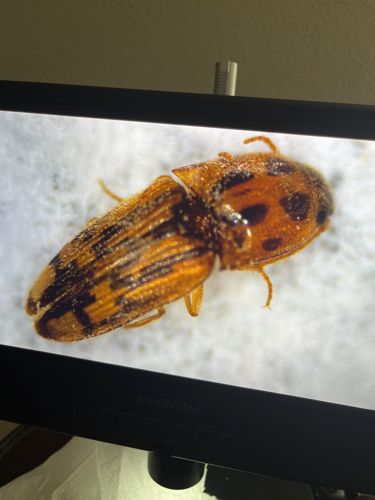Click Beetle (possibly eyed click beetle larva)
Scientific Name: Family Elateridae (larva of Alaus oculatus or similar species within the family)
Order & Family: Order Coleoptera, Family Elateridae
Size: Larvae can range from 10 to 60 mm (0.4 to 2.4 inches). Adults vary greatly but can be from a few millimeters to over 50 mm (2 inches). The specimen in the image appears to be a larva, likely on the larger end of the range given the detail.

Natural Habitat
Larvae (often called 'wireworms') live in soil, rotting wood, or under bark, feeding on roots, seeds, or decaying organic matter. Adults are typically found on plants, flowers, or under bark.
Diet & Feeding
Larvae (wireworms) are primarily herbivorous, feeding on plant roots, seeds, and subterranean stems, sometimes causing significant agricultural damage. Some species are predatory on other soil insects. Adults usually feed on nectar, pollen, sap, or are not observed feeding.
Behavior Patterns
Click beetle larvae are known for their hard, elongated, cylindrical bodies. They move slowly through the soil. The distinctive 'click' behavior is characteristic of adult click beetles: when overturned, they can snap a spine on their prosternum into a groove on their mesosternum, propelling themselves into the air to right themselves. This behavior is primarily for escaping predators or righting themselves. The larval stage (wireworm) can be long-lived, sometimes several years.
Risks & Benefits
Risks: Wireworms can be significant agricultural pests, damaging crops like corn, potatoes, wheat, and vegetables by feeding on their roots and seeds, leading to yield loss. Benefits: Some click beetle species, particularly their larvae, are predatory on other insect pests in the soil, providing a natural form of pest control. Adults can also be pollinators, though this is less common.
Identified on: 9/5/2025